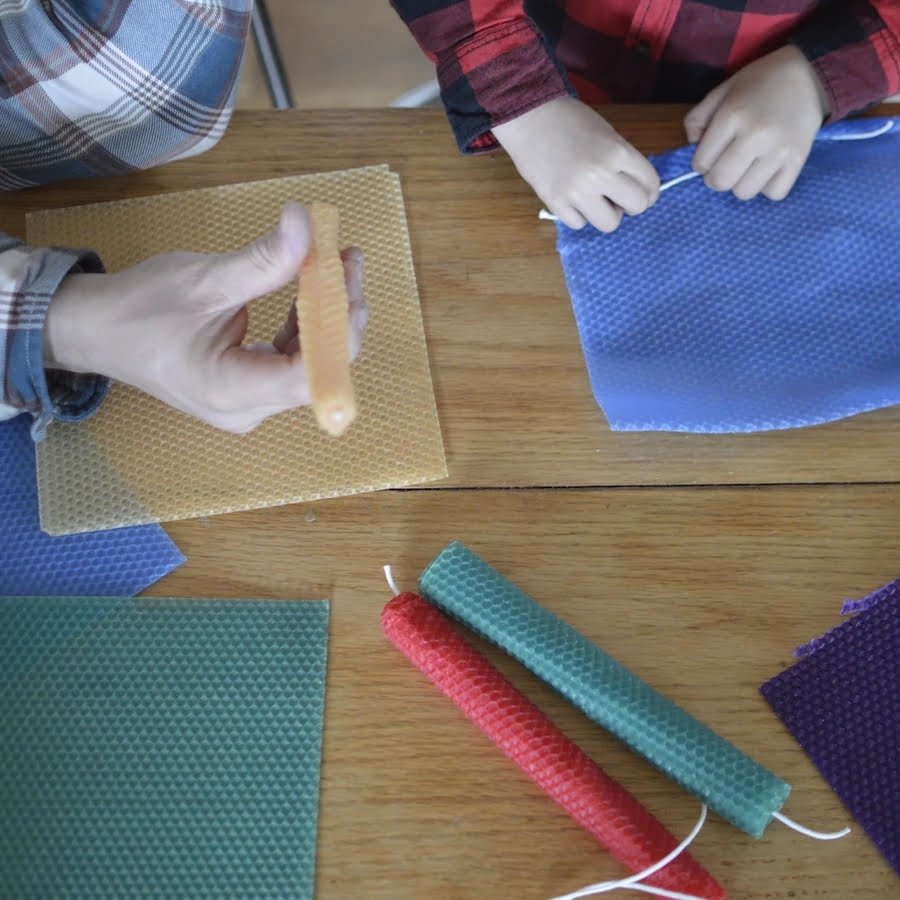Introduction
Candle burning is a practice which has been used for centuries, from the earliest of civilizations to present day. It is common in religious and spiritual practices, as well as decorative purposes. Candles can create a calming and relaxing atmosphere when used in the right way. However, burning candles releases harmful particles into the air including soot and particulate matter that can be inhaled by those nearby. This can lead to irritation of the eyes, nose and throat, dizziness, headaches and fatigue among other symptoms. In some cases, it can even make people feel sick.
Common Candles and Their Possible Side Effects
Many common candles, such as scented and tea light candles, may release fumes that can cause many unpleasant side effects. These may include sinus irritation, headaches, nausea and dizziness. Even unscented candles can produce a strange odor due to the burning of the wick made out of metal, paper or other materials. It is important to be aware of the potential dangers of any candle you choose to use in your home.
Scented Candles: There are several different types of scented candles that can produce odors harmful to humans over an extended period of time. Aromatic compounds from these candles may contain hazardous chemicals such as benzene derivatives, as well as volatile organic compounds like formaldehyde which can irritate and cause breathing difficulties.
Tea Light Candles: Tea lights are often used for decoration and scent purposes in households but they may have harmful by-products such as smoke, soot and carbon dioxide. Burning these type of candles create substances that some people may find irritating on their skin or cause respiratory problems due to inhalation.
Floating Candles: Floating candles are manufactured plastic holders with a consistent wax shape placed inside them. Unlike regular candles they give off little fragrances while burning and hence produce fewer odors that could be hazardous when inhaled over a long period of time. However it is best to always check if these particular types of candle contain any unwanted toxins through researching their elements beforehand.
Whichever type you decide to burn at home it is important to remember that all forms can create hypersensitive reactions in people who might not even be aware of their presence or unknowingly become ill from long term contact with certain aromas in the air without them knowing what’s caused it .For this reason its important avoid using candle if you feel sick or congested during or after using them in order protect your health in the longer run!
Investigating the Science Behind Candle Burning Sickness
Having unpleasant reactions to burning candles is something experienced by many people, although it often goes unreported or unrecognized as a problem. This issue is known as candle burning sickness and may be caused by a range of reasons. One possible explanation for why this happens could be the fumes from the burning wax itself. When the heat from the flame comes into contact with the wax particles, it results in multiple types of solid, liquid and gaseous byproducts that are then released into the air. These may have potentially harmful chemical compounds that can cause irritation to your respiratory system upon inhalation. Another factor which can contribute to candle burning sickness is contact with certain fragrances that are added to make your space feel more pleasant while you light candles. Analysis of various fragrances reveals some consist of small molecules that could cause unwanted physical symptoms such as a headache or nausea once inhaled for long periods of time. Other potential causes worth exploring include how long you burn a candle for as well as presence of any potential allergens contained in either the wax or fragrance components themselves. Being aware of all these potential factors will hopefully help you avoid ill health effects caused by lighting candles and allow you to enjoy them without feeling discomfort.
Prevention & Protective Measures for Reducing Candle Burning Illness
When burning candles, it is important to take safety measures to reduce the risk of health issues. Below are some tips for reducing potential health problems associated with burning candles:
• Always purchase quality candles made from certified materials; this will help to ensure that the candle does not contain any harmful toxins or chemical fragrances.
• Make sure that the room is well ventilated when burning candles and never leave unattended flames burning.
• When using scented candles, it is best to use unscented varieties as they typically contain fewer synthetics or toxins than their scented counterparts.
• If possible, stick to beeswax or soy-based wax varieties, as these burn cleaner than paraffin waxes.
• Avoid using large pillar or jar-style candles with too much black soot as they tend to release more compounds into the air when burned.
• Always keep your candles away from flammable items such as curtains, rugs and other fabrics.
• Avoid playing with the wick and never cut a candle’s wick shorter than ¼ inch in length.
Tips for Burning Candles Safely & Easily
1. Always keep the wick trimmed – Keep the wick trimmed so that it is no longer than a quarter of an inch. Longer wicks can cause smoking and soot to form faster, as well as accelerating flame size.
2. Use a candle snuffer or other metal object – A candle snuffer or any other metal item can help extinguish the flame without blowing black smoky ashes everywhere. This allows you to easily control how much smoke is produced when the candle is put out.
3. Keep candles away from drafts – Drafts in air vents can cause too much smoke and an unpleasant smell when burning candles, which can make you feel sick. Try to avoid placing them near windows or outside doors, which could be subject to excessive breeze or drafts from outside.
4. Choose non-toxic candles – Candles made of paraffin wax release toxic fumes into the air which can aggravate asthma symptoms or inhaling the fumes in large quantities may even prove lethal in some cases! Make sure that your candles are made with natural materials like soy wax instead to reduce any risk of inhaling harmful toxins.
5. Take regular breaks – Too much exposure to burning candles can lead to headaches, nausea, dizziness and lightheadedness as people become overwhelmed by strong smells like those released by some scented candles and unsanitary conditions created by accumulation of burns on wax pools like from jar candles with unattended flames for extended periods of time . Taking regular breaks will ensure that you avoid potential health dangers caused by over-exposure to burning candles and maintain a safe environment for everyone in your home
Supplementation & Natural Remedies to Boost Resilience
The dangers of burning candles in your home are well known, with many health experts warning about their potential for triggering asthma attacks and allergic reactions. But even if you aren’t sensitive to the smoke or fumes from a candle, it can still make you feel sick due to the buildup of airborne toxins released as the flame burns. The best way to reduce your risk is to limit your exposure by ventilating the room with regular air exchanges and making sure your candles are made from natural materials such as beeswax.
In addition to reducing exposure, there are also steps you can take to make yourself more resilient to the negative effects of candles burning. A nutritious diet filled with nutrient-rich foods and plenty of antioxidants can help keep your respiratory system strong and less susceptible to environmental irritants. Taking herbal supplements, such as ginger and turmeric, is thought to offer some protection against respiration difficulties due to pollution or fragrances. Drinking plenty of water and avoiding sugary beverages will also help support overall lung health, since sugary drinks can cause mucus buildup in the lungs that may exacerbate candle fumes allergies or worsen discomfort from smoke inhalation. Finally, essential oils like lavender and eucalyptus can have calming properties which may help lessen the feeling of nausea or dizziness caused by candle burning.
Making the Most of Candle Burning and Feeling Well
If you find yourself feeling sick when you burn candles, there are a few things you can do to help minimize the effects and still enjoy the experience. First, try burning candles that are made with all-natural ingredients such as soy wax, beeswax or coconut wax as they create less unpleasant odors when burning. Avoid scented candles as synthetic fragrances can be more likely to cause symptoms of nausea and headaches. Secondly, open some windows to let in fresh air and improve ventilation. This will help disperse any smoke or smells quickly and make the room easier to breathe in. Lastly, limit your candle burning time to reduce exposure to soot and smoke. To maximize the benefits of candle burning while still feeling well, try sticking to natural candles and keep the room well ventilated in order to prevent any discomfort from arising.
Conclusion
Candle burning can be a relaxing and enjoyable activity, but it can also have less desired effects on our health. Burning scented candles often releases toxins into the air, which may cause respiratory symptoms such as headaches, dizziness, irritability or even nausea and vomiting. If you find yourself feeling sick after burning a candle, it’s best to discontinue use to protect your health. Additionally, researching the ingredients of the candle before purchasing them can help to ensure that you’re avoiding harmful materials in your home environment.

Welcome to my candle making blog! In this blog, I will be sharing my tips and tricks for making candles. I will also be sharing some of my favorite recipes.





